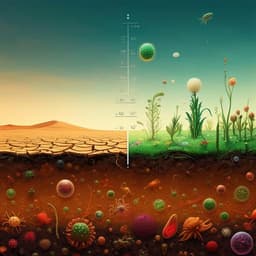
Environmental Studies and Forestry
Patterns in soil microbial diversity across Europe
M. Labouyrie, C. Ballabio, et al.
Discover how land-use disturbances influence microbial diversity and functioning across Europe in groundbreaking research by Maëva Labouyrie and colleagues. This study reveals critical insights that challenge our understanding of microbial ecosystems and environmental management, highlighting the need for a comprehensive approach to biodiversity monitoring.
~3 min • Beginner • English
Related Publications
Explore these studies to deepen your understanding of the subject.







